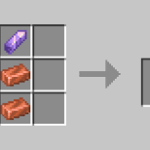Creating your very own Minecraft server is an exhilarating endeavor that allows you to delve into a world of limitless creativity and collaboration. Whether you aspire to build a thriving community, embark on epic adventures with friends, or simply explore the depths of your imagination, establishing a Minecraft server grants you the freedom to shape your own virtual universe.
To begin this exciting journey, a few essential steps must be followed. First and foremost, you need a reliable computer capable of handling the server’s demands, including sufficient processing power, ample storage space, and a stable internet connection. Once these prerequisites are in place, the next crucial element is selecting the appropriate server software. Popular choices such as Paper, Spigot, or Bukkit offer extensive customization options, performance optimizations, and plugin support, catering to various gameplay styles and preferences.
After choosing the server software, it’s time to configure the server settings to suit your vision. This involves selecting a suitable game mode, adjusting player limits, setting world generation parameters, and implementing necessary security measures. It is important to strike a balance between accommodating your players’ desires and maintaining a smooth and enjoyable experience.

Hardwre Requirements
Before setting up a Minecraft server, it’s important to ensure that your hardware can handle the server’s demands. Minecraft servers can be resource-intensive, especially if you plan to host multiple players simultaneously. Here are the key hardware requirements:
-
A powerful computer: Your computer should have a robust processor (preferably multicore), ample RAM (at least 4GB), and sufficient storage space.
-
Reliable internet connection: A stable and high-speed internet connection is crucial for hosting a Minecraft server. Consider an internet plan with a decent upload speed to ensure smooth gameplay for all players.
Server Software
After confirming your hardware meets the requirements, the next step is to choose the server software. The most popular Minecraft server software is “Paper,” which offers better performance and customization options compared to the default “Vanilla” server. Follow these steps to set up your Minecraft server using Paper:
a. Download Paper: Visit the official PaperMC website and download the latest version of the server software compatible with your operating system.
b. Set up the server: Create a dedicated folder for your server and move the downloaded Paper file into it. Double-click on the file to start the server for the first time. This will generate necessary configuration files and folders.
c. Customize the server: Open the server properties file using a text editor and modify settings such as the server name, maximum player limit, game mode, and difficulty level. Save the changes.
d. Launch the server: Run the server file once again to start your Minecraft server. It may take a few moments to initialize.
Server Configuration
Now that your Minecraft server is up and running, it’s time to configure it according to your preferences:
a. Whitelist: If you want to restrict access to your server, you can enable the whitelist feature. Add the Minecraft usernames of the players you want to allow on the server to the whitelist file.
b. Plugins: Minecraft offers an extensive library of plugins that can enhance gameplay and add exciting features. Research popular plugins and install them on your server to customize the experience further.
c. Server permissions: Set up permissions to define what actions different players can perform on the server. This helps you maintain control and prevent griefing or unauthorized activities.
d. Backups: Regularly backup your server files to protect against data loss. Use backup plugins or manually copy the server files to an external storage location.
Inviting Players
With your server fully configured, it’s time to invite your friends to join the fun:
a. Share the server address: Provide your friends with the IP address or domain name of your server so they can connect to it. Ensure that your firewall and router settings allow incoming connections to your server.
b. Port forwarding: If you’re hosting the server on your home network, you might need to set up port forwarding on your router. This allows external connections to reach your server. Consult your router’s documentation for instructions.
c. Communication: Set up a communication channel, such as a Discord server or group chat, to keep in touch with your fellow players and coordinate activities.
Conclusion
Creating a Minecraft server opens up a world of possibilities for you and your friends to embark on exciting adventures together. By following the steps outlined in this article, you can set up a Minecraft server tailored to your preferences. Remember to ensure your hardware meets the requirements, choose the right server software, configure the server settings, and invite your friends to join. Building and managing a Minecraft server can be a rewarding experience, providing endless opportunities for creativity and collaboration. So, gather your friends, unleash your imagination, and start creating unforgettable memories in your very own Minecraft server.















![Cricket League MOD APK [Unlimited MoneyUnlocked] v1.17.2](https://techbigs.co.in/wp-content/uploads/2024/03/Cricket-League-MOD-APK-Unlimited-MoneyUnlocked-v1.17.2-4-75x75.jpg)
Facebook comments